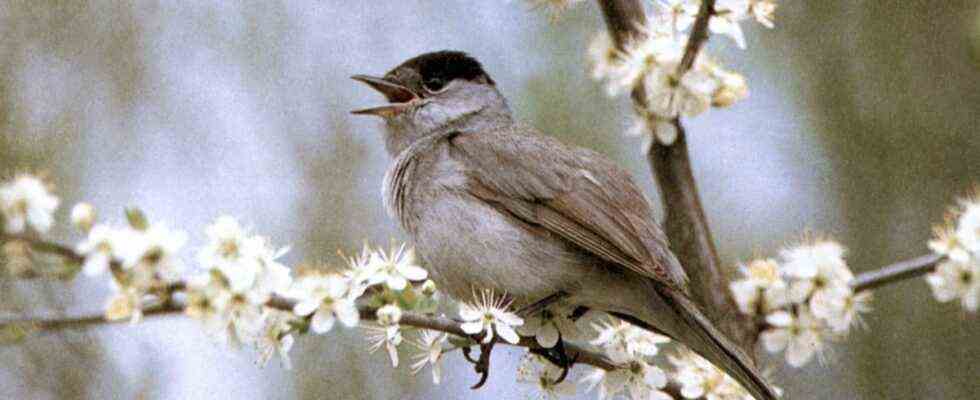On their way to their summer or winter quarters, migratory birds fortify themselves with fruits; The seeds remain in their stomachs during the flight, which the animals transport over long distances and excrete on the way. A few years ago, researchers discovered seeds in the stomachs of migratory birds that had been torn by falcons on a Canary Island, which came from the mainland over 170 kilometers away. The number was small, but given the billions of migratory birds that make their journey each year, there are millions of seeds that travel around the world.
Normally this does not help the plants because they are not adapted to the foreign climatic conditions. The seeds often do not germinate in the first place, and even if they do, the plants die in heat or drought or become overgrown. But when the climate changes around the world, the transport service provided by birds can suddenly become vital for many plant species.
Climate change challenges plants to find suitable climatic niches
If the earth warms up, animals and plants have to migrate towards the poles in order to find suitable climatic niches for them. Plants are dependent on the wind, which blows their seeds away, or on animals as transporters. Many seeds are just distributed in a radius of less than a kilometer around the mother plant. “Actually, plant species would have to shift their range an average of 4.2 kilometers per decade to the north in order to keep up with climate change,” says the ecologist Jörg Albrecht from the Senckenberg Biodiversity and Climate Research Center. “That can’t be done under normal conditions.”
So the plants are dependent on the help of the migratory birds, which cover long distances within a short period of time. To check this, Albrecht and 17 other scientists from Europe examined more than a dozen forests on the continent. Albrecht himself took on a mixed deciduous forest near Krakow: every two weeks the ecologist checked 20 trays, spread out under the trees and bushes, to see if there was any bird droppings on them. He then scratched it off and examined it to see whether it contained seeds from fruit containing meat. Because this is what migratory birds prefer to target.
The next thing was to find out who brought the seeds. The scientists working with Juan González-Varo from the University of Cádiz in Puerto Real achieved this by scanning the outer skin of the seeds for remnants of the intestinal mucosa of the birds and genetically analyzing them in the laboratory. Together with information on bird migration, fruiting period and plant phenology, a kind of Europe-wide interaction network was created, which for the first time provided an answer to whether migratory birds can help plants to react to climate change. “The result is sobering,” says Albrecht. “It turned out that the majority of the plants produce fruit when the birds move south – that is, to warmer areas.”
Anyone who expects Mediterranean vegetation in Germany could be disappointed
A total of 86 percent of the 81 plant species examined were transported by migratory birds that migrate south in autumn, the authors write in the journal Nature; but only a good third of the plant species were taken with them by birds that fly north in spring on their return from their southern winter quarters. At that time, however, only a minority of the plants bear fruit. Like the juniper. Or the ivy, the seeds of which the song thrush flies to Scandinavia.
Many of the profiteers among the plant species also turned out to be related to one another. That means: Whole lines of a family tree could disappear if the plants cannot find another way to get a lift in cooler areas. “Until now, the idea prevailed that the Mediterranean vegetation would come to us when the climatic conditions shift to the northeast,” says Wolfgang Fiedler from the Max Planck Institute for Ornithology in Radolfzell, who was not involved in the study. “Now we know: only certain parts of it could come out of it.” The selective spread of certain groups of plants could lead to a break in the diversity of the European flora.
The surprising finding was that only a handful of bird species were mainly responsible for the important long-distance transport of seeds. “The most important role, of all things, is played by common species, that is, species that are very common and to be found everywhere,” says Albrecht. For the Mediterranean region this was mainly the blackcap, for the temperate latitudes the blackbird.
The moving service is therefore not necessarily secured. Take the blackbird, for example: For several decades, the former forest bird has nested more and more in our gardens and often stays at home all year round. The blackcap also decides more often against the long journey. There are good reasons for this: just like the song thrush, it is one of the most hunted birds in the Mediterranean. It is estimated that over a million specimens are shot down each year.

